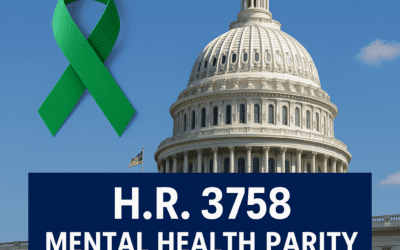Although the Affordable Care Act prohibits health insurance denials on account of pre-existing conditions, the ACA is inapplicable to disability insurance.
A recent federal court case from Massachusetts, Holzman v. Hartford Life & Accident Insurance Co., 2019 WL 181527 (D. Mass., Jan. 14, 2019), examined whether a claim for disability benefits fell within a pre-existing condition exclusion and reached a surprising conclusion.
In Holzman, the policy covering the plaintiff, William Holzman, defined a “pre-existing condition” as “any accidental bodily injury, sickness, mental illness, pregnancy or episode of substance abuse for which the individual receives ‘[m]ical Care’ during the 90-day period that ends the day before the effective date of coverage (‘the Look-Back Period’).
Medical care is received by a patient when a physician or health-care provider is consulted or gives medical advice, or recommends, prescribes or provides treatment. Treatment includes, but is not limited to, medical examinations, tests, attendance or observation by a physician and use of drugs, medicines, services, supplies or equipment by the patient.”
Holzman’s coverage began on June 10, 2016. During the preceding 90 days, he was seen by a doctor for facial paralysis and was diagnosed with probable Bell’s palsy, but the cause of his symptoms could not be determined. However, about two weeks later, salivary duct cancer was first suspected; Holzman stopped working a month later when he had surgery to remove a mass in his jaw that went undetected until after the disability coverage began.
When Holzman subsequently applied for disability insurance benefits, his claim was rejected based on the pre-existing condition exclusion following a review by an oncologist who concluded that Holzman had symptoms related to the salivary duct cancer prior to the effective date of coverage, although it was not known or even suspected that he had cancer at that time.
The court determined the arbitrary and capricious standard of judicial review applied and sided with Hartford, which maintained that its exclusion was applicable to “treatment of any symptom which in hindsight appears to be a manifestation of the later, disabling condition.”
Although a prior appellate decision, Hughes v. Boston Mutual Life Insurance Co., 26 F.3d 264, 267-68 (1st Cir. 1994), expressly rejected such an interpretation, it did so by applying the doctrine of contra proferentem, which the court found inapplicable based on the deferential standard of judicial review.
The court also looked at Glista v. Unum Life Insurance Company of America, 378 F.3d 113, 127-28 (1st Cir. 2004). There, the claimant was treated for nonspecific back pain during the look-back period immediately prior to the inception of disability coverage; however, he was subsequently diagnosed with primary lateral sclerosis.
The court rejected the pre-existing condition exclusion despite a deferential standard of review “on the ground that there was nothing in the record that showed a clear, direct relationship between the patient’s symptoms and PLS during the Look-Back Period.”
Despite the apparent similarities, Hartford argued that Glista was distinguishable because the symptoms during the look-back period in that case were not necessarily related to the subsequent diagnosis while the symptoms experienced by Holzman were a specific manifestation of the salivary gland cancer.
Holzman disagreed, arguing that “a later diagnosis of cancer, in retrospect, is immaterial to whether medical care providers who treated him for Bell’s [p]alsy during the [l]ook-[b]ack [p]eriod suspected that cancer was the cause of his facial paralysis.”
The court also acknowledged Lawson ex rel. Lawson v. Fortis Insurance Co., 301 F.3d 159, 166 (3d Cir. 2002), and Estate of Ermenc by Ermenc v. American Family Mutual Insurance Co., 221 Wis.2d 478, 585 N.W.2d 679, 682 (Ct. App. 1998), which both raised concerns about expanding pre-existing condition exclusions too broadly.
Indeed, the court observed, “considering treatment for symptoms of a not-yet-diagnosed condition as equivalent to treatment of the underlying condition ultimately diagnosed might open the door for insurance companies to deny coverage for any condition the symptoms of which were treated during the exclusionary period.”
Nonetheless, the court ruled for Hartford and found, “the pre-existing condition need not be the same condition as the disabling condition, and thus the question of whether the physician accurately diagnosed or suspected the disabling condition during the [l]ook-[b]ack [p]eriod is irrelevant.”
This opinion has troubling implications. The court looked at only part of the exclusion and ignored the fact that Holzman sought advice and received treatment for facial paralysis, not cancer. The cancer was unsuspected and was thus undiagnosed and untreated until after the coverage went into effect. Accordingly, he received no “medical care” for that condition.
A similar case that rejected a pre-existing condition exclusion is Langdon v. Principal Life Insurance Co., 2016 WL 4720025 (N.D. Ill., Sept. 9, 2016). Although Langdon was decided under a de novo standard, it followed Lawson andPitcher v. Principal Mutual Life Insurance Co., 93 F.3d 407 (7th Cir. 1996), which is particularly instructive.
In Pitcher, the plaintiff developed breast cancer, which the insurer claimed was pre-existing because she had been examined and found to have lumps in her breasts and even underwent a mammogram prior to the effective date of her coverage. The 7th Circuit found, “The key question … [wa]s whether, in the words of the policy, [Charlotte] Pitcher received a ‘treatment or service’ for breast cancer during the 90-day period prior to the effective date of coverage … and not whether Pitcher actually had breast cancer during this time period.”
The court determined the examination and the services she underwent were related to her fibrocystic breast condition, not her later-diagnosed breast cancer. Even though Pitcher received a mammogram, that court explained, “[t]he fact that a physician orders a routine mammography exam does not mean that he necessarily suspects cancer in a particular patient, but only that he is practicing sound medicine.”
Langdon thus concluded by pronouncing, “[W]hen the patient exhibits only nonspecific symptoms and neither the patient nor the physician has a particular concern in mind, or when the patient turns out not to have a suspected disease, it is awkward at best to suggest that the patient sought or received treatment for the disease because there is no connection between the treatment or advice received and the sickness.”
This article was initially published in the Chicago Daily Law Bulletin.
©2019 by Law Bulletin Media. Content on this site is protected by the copyright laws of the United States. The copyright laws prohibit any copying, redistributing, or retransmitting of any copyright-protected material. The content is NOT WARRANTED as to quality, accuracy or completeness, but is believed to be accurate at the time of compilation. Websites for other organizations are referenced at this site; however, the Law Bulletin Media does not endorse or imply endorsement as to the content of these websites. By using this site you agree to theTerms, Conditions and Disclaimer. Law Bulletin Media values its customers and has aPrivacy Policy for users of this website.






